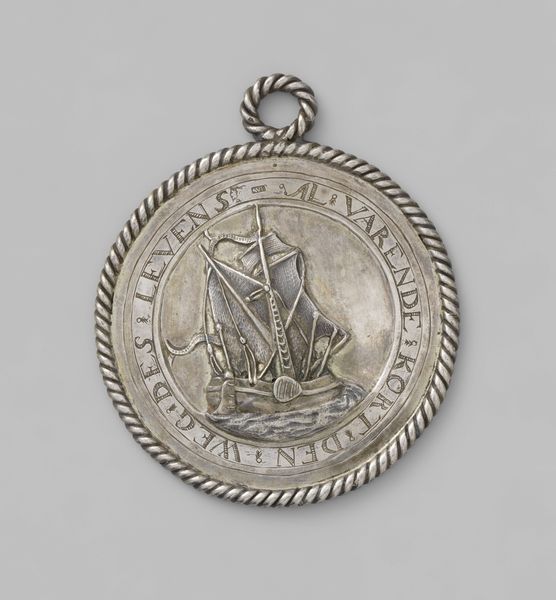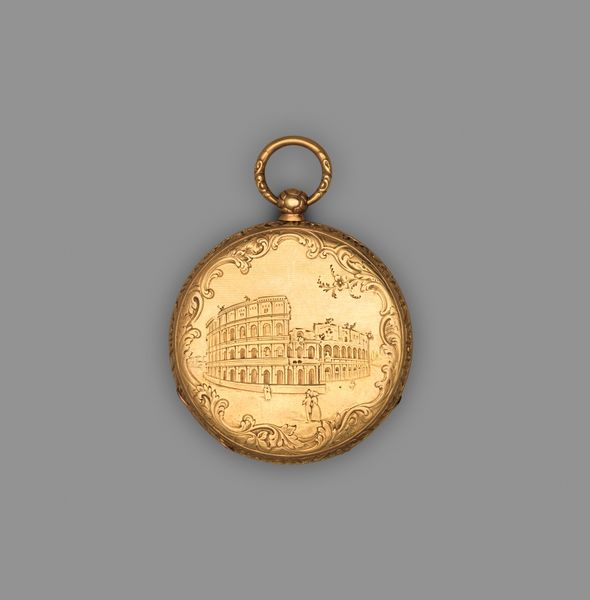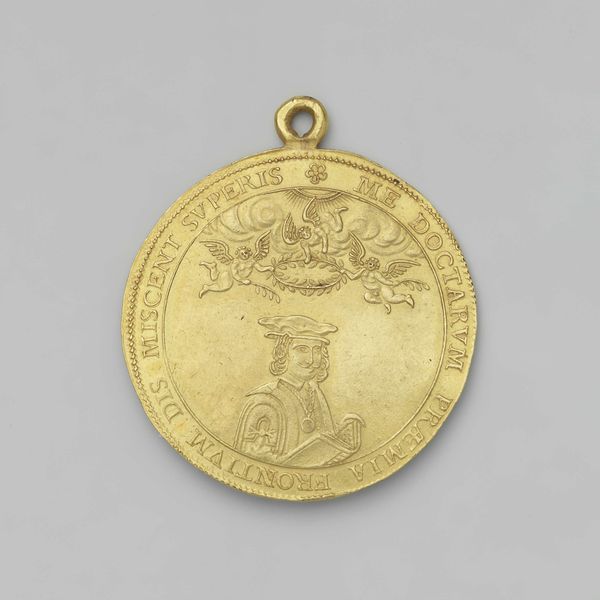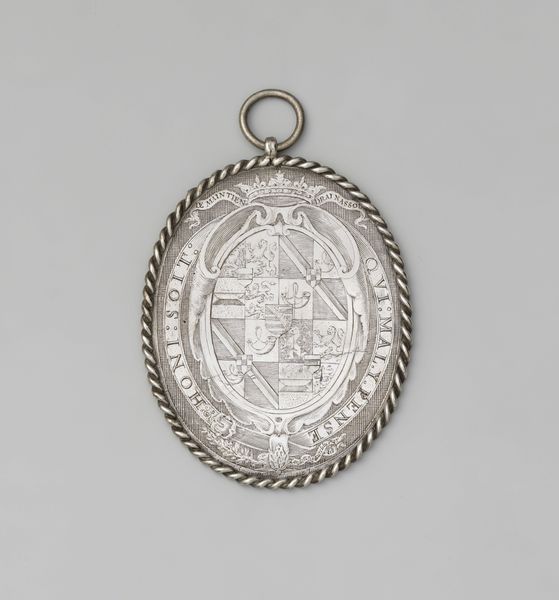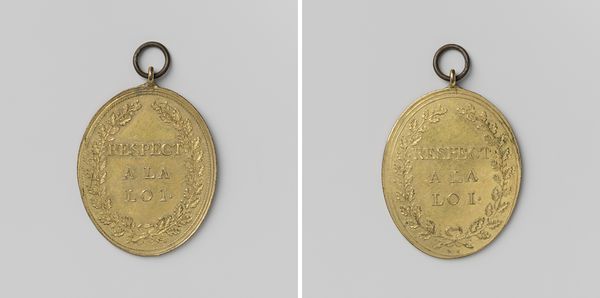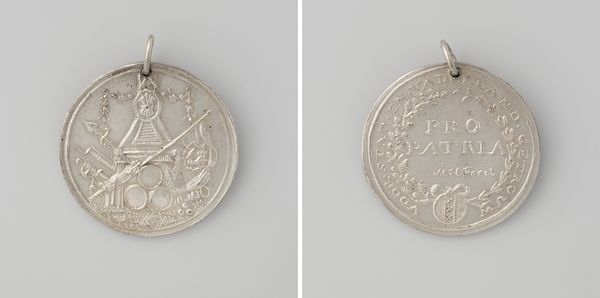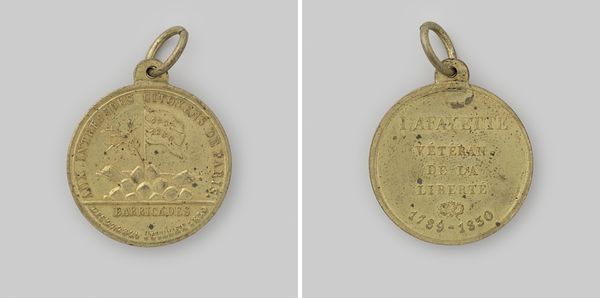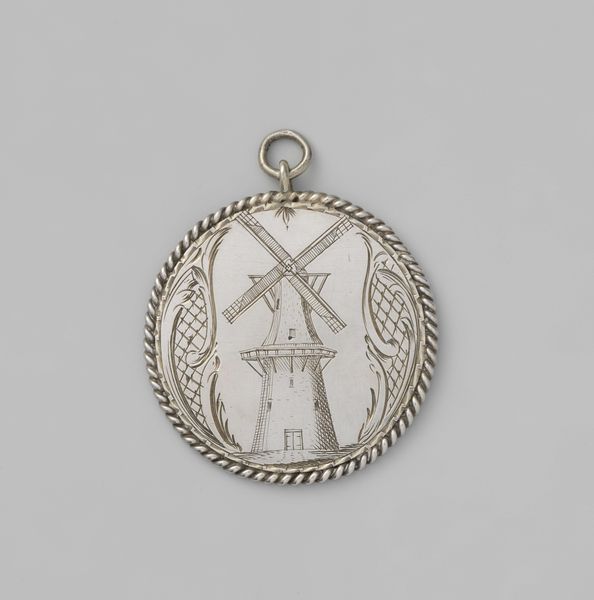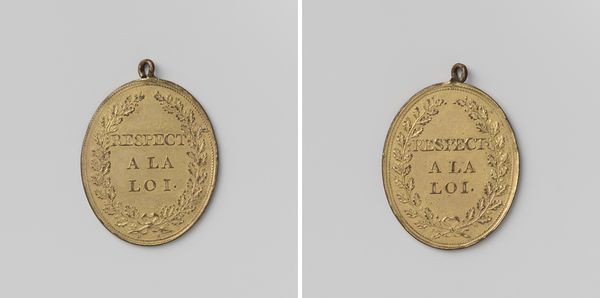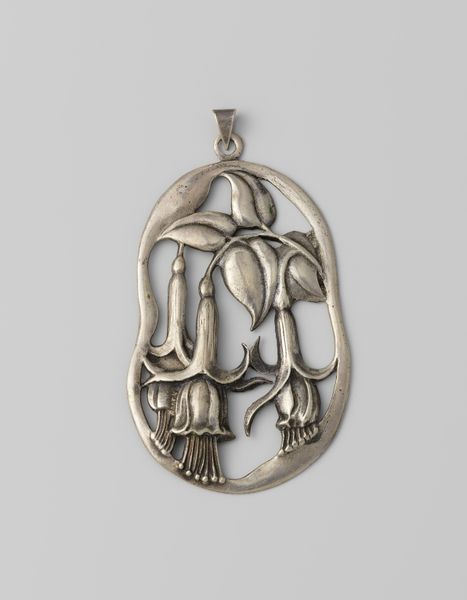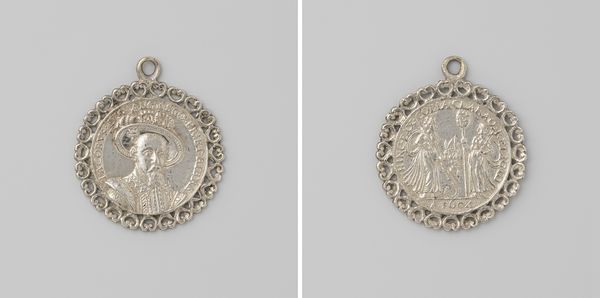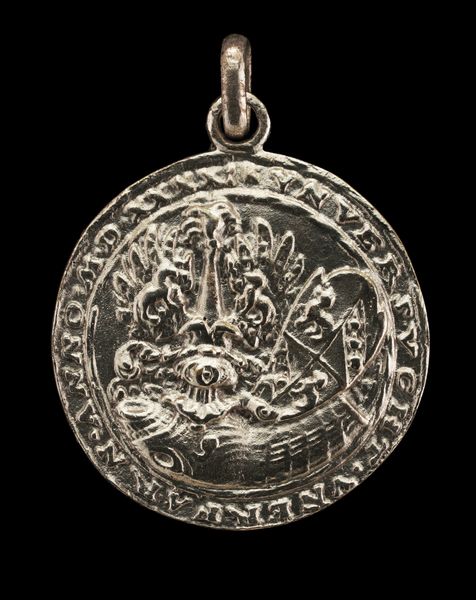
Metselaars-, steenhouwers-, leidekkers-, loodgieters- en pompenmakersgilde van Amsterdam, gildepenning van Corneelis Wansbeek, meester metselaar 1772
0:00
0:00
Dimensions: length 6 cm, length 5.6 cm, diameter 5.1 cm, weight 26.80 gr
Copyright: Rijks Museum: Open Domain
This is a silver guild badge, made in Amsterdam, marking Corneelis Wansbeek’s achievement as master mason in 1772. Silver is a naturally occurring element, but must be mined, smelted, and refined. All of this takes human labor. Once purified, the metal can be formed using a variety of techniques. In this case, the badge was probably cast in a mold, giving it the basic circular shape and the decorative rope-like border. The inscription was then carefully incised into the surface, using a sharp tool to remove tiny slivers of silver. Look closely and you can see the precision and control required to create the elegant lettering and floral motifs. Guild badges like this one served as symbols of status and belonging within a particular trade. They also speak to the highly structured nature of labor in the 18th century, with its emphasis on apprenticeship, mastery, and collective identity. The amount of work involved is a testament to the value placed on skilled craftsmanship, and on silver as a precious material. The design is a reminder that even seemingly simple objects can be rich with social and cultural meaning.
Comments
No comments
Be the first to comment and join the conversation on the ultimate creative platform.
